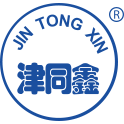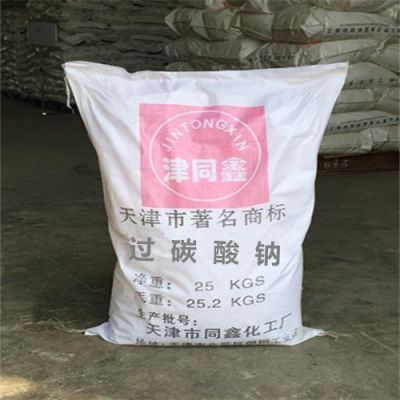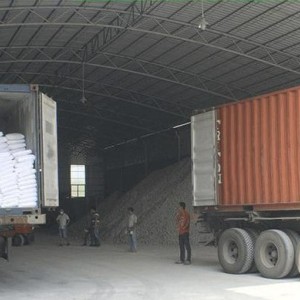Sodium Percarbonate
The appearance of sodium percarbonate is white crystal or crystalline powder.It can be released in case of tide.Is a strong oxidant.Sodium percarbonate is an addition compound of hydrogen peroxide and sodium carbonate. It is mainly used as bleaching agent and oxidizing agent, as well as detergent, cleaning agent, detergent in chemical, paper, textile, dyeing and finishing, food, medicine, health and other departments. .Other uses are similar to sodium perborate, which can replace sodium perborate to save boron salts.
Basic information
Name | Sodium Percarbonate |
Exterior | White particle | Boiling point | 50°C |
Bulk density | 0.9~1.2 g/cm3 | Decomposition temperature | 50 °C |
PH value (3% solution) | about 10.5 | Solubility | Min 14.5g/100g water at 20°C |
Decomposition products | oxygen | Incompatible substances | Reducing agents, water, acids, flammables, organics, etc. |
CAS-No. | 15630-89-4 | EINECS number | 239-707-6 |
Molecular formula | 2Na2CO33H2O2 | Molecular weight | 314.02 |
Sodium percarbonate, also known as sodium percarbonate, solid hydrogen peroxide, is an addition compound of sodium carbonate and hydrogen peroxide. Sodium percarbonate has the advantages of ~, odorless, and pollution-free. , washing, good water solubility and so on.
Sodium percarbonate, chemical formula: 2Na2CO33H2O2(or Na2CO4), also known assodium percarbonate, commonly known as solid hydrogen peroxide, is an inorganic salt, white granular powder, and its aqueous solution is alkaline It can be decomposed into sodium carbonate and hydrogen peroxide.
Sodium percarbonate is usually used as an auxiliary agent for washing powder, has the effect of oxygen-based bleaching, and can effectively increase dissolved oxygen in fish pond management. In commercial use, it is usually wrapped with substances such as sulfate and silicate to obtain Coated sodium percarbonate to improve storage stability requirements in laundry detergent formulations.The more traditional laundry bleaching aid is sodium perborate. The advantages of sodium percarbonate lie in the stability of storage and good compatibility with other laundry detergent ingredients, which is incomparable and irreplaceable by sodium perborate.In terms of chemical structure, their essential difference is that sodium percarbonate is an adduct, while sodium perborate is a bonded product.
Toxicological information
LD50 | 2400 mg/kg rat dermally; >2000 mg/kg rabbit oral; >4580 mg/kg rat inhalation |
Ecological information
Non-biodegradable | Non-biodegradable |
Ecotoxicity | Degradation products are low in toxicity to the environment |
Bioconcentration | Non-bioaccumulative |
Acute toxicity | No specific data |
Ecological data
Generally slightly hazardous to water bodies, do not contact undiluted or large quantities of product with groundwater, water courses or sewage systems, and do not discharge material into the surrounding environment without government permission.
Application field
In the textile industry, it can be used as a rinsing agent, a reducing color developer, and can also be used alone as deodorant, milk preservative, etc.
Chemical Products
Sodium percarbonate is commonly known as solid hydrogen peroxide.Hydrogen peroxide (H2O2), commonly known as hydrogen peroxide, is a colorless liquid at room temperature, which is difficult to ionize and easy to decompose.As a classic chemical product, the industry began to produce it more than 100 years ago.With the growth of social needs, especially the needs of ecological environmental protection, hydrogen peroxide has become more popular in recent years and is called "green oxidant".For the convenience of storage, transportation and use, alcohol precipitation is used in industry to convert it into solid sodium percarbonate crystal (chemical formula: 2Na2CO3·3H2O2), which has Na2CO3and H2O2duality.The production process of alcohol precipitation is as follows: at 0 ~ 5 ℃, to the saturated Na2CO3solution, first add H2O2And hydrogen peroxide stabilizer (composite stabilizer sodium silicate + EDTA (mass ratio 2:1), w=0.35% ~ 0.45%, or sodium silicate + magnesium sulfate + EDTA (mass ratio 1:1:1), w= 0.35% to 0.45%).After fully reacted, isopropanol was added, filtered and liquid-separated to obtain sodium percarbonate crystals.After treatment, granular oxygen, that is, solid oxygen, can be obtained, which can be used for three-dimensional oxygenation in fish ponds to purify water quality.The multi-functionalization of detergents, that is, while washing and decontamination, also has the functions of bleaching, etc., has become the development trend of detergents. Many foreign detergents are added with bleaching components, and domestic develop in this direction.Because sodium percarbonate is odorless, easy to dissolve in cold water, and has strong detergency, it can release oxygen after dissolving in water and play a variety of functions such as bleaching, which is in line with the development trend of modern detergents.Traditional powder detergents often use sodium perborate, but sodium perborate has the disadvantages of slow dissolution, high price, and the influence of boron on crops.Compared with sodium perborate, sodium percarbonate has lower cost and better solubility, suitable for use in cold areas and winter, and will not cause harm to crops. Therefore, sodium percarbonate is increasingly used in detergent production. At present, sodium percarbonate has been widely used. It is used as household and industrial washing, bleaching and bleaching agent. It is used in the production fields of synthetic fiber, animal fiber, synthetic resin fiber, pulp grease, etc. It has good bleaching effect, does not damage the fabric, and does not turn yellow.
washing aids
For example, in Japan's heavy-duty color bleaching washing powder, the amount of sodium percarbonate added is 10% (mass fraction, the same below); the common enzyme bleaching washing powder commonly used in foreign countries is added in an amount of 8%; the new Japanese detergent for stain removal, adding The amount is 20%; China uses dust-proof bleaching washing powder, the addition amount is 8%.Since the 1980s, the demand for detergents in Western industrialized* markets has grown at an average annual rate of 10%.In China, the application of sodium percarbonate to detergent production is in its infancy. Some manufacturers have begun to combine sodium percarbonate with other effective detergent auxiliaries to make high-efficiency detergents or color bleaching detergents for sale. Smaller quantities.Although the stability of China's industrial sodium percarbonate alone has been improved, due to the poor compatibility with the currently used washing powder components, when sodium percarbonate is added to the washing powder, due to the water content in the washing powder The presence of high or some components and impurities that can cause the decomposition of sodium percarbonate will cause the decomposition of sodium percarbonate. At present, this problem has attracted great attention from manufacturers, and began to study and produce packaged sodium percarbonate products.At present, in the face of fierce market competition, detergent manufacturers also hope to add sodium percarbonate to improve product performance, especially in the production of low-phosphorus or non-phosphorus washing powder. By adding sodium percarbonate, the product can be optimized and refined. , Multifunctional development.China is a big country in the production of detergents, and the current production capacity has reached more than 220,000 t/a. If it is calculated according to 5% of the added amount, the detergent industry alone needs to consume 100,000 t of sodium percarbonate per year. It can be seen that China's sodium percarbonate market The potential is huge.
Diagnosis and treatment of hygiene
Mix sodium percarbonate with a solid substance containing polyvinyl acid and any compound catalyst such as Cu, Fe, Co, Mn, etc. When oxygen is used for emergency use, add an appropriate amount of water to decompose oxygen, which is simple and convenient, and the amount of oxygen supply Big.This oxygen source is suitable for emergency situations such as household (especially rural household), underground construction, mining, flood control, fire fighting and disaster relief, etc. It is an emergency oxygen supply agent with excellent performance.According to conservative estimates, the sodium percarbonate used for medical oxygen supply in Beijing and Tianjin alone needs about 400 tons per year, and some exported sodium percarbonate is also used in this aspect.Sodium percarbonate is also an agent that can kill common bacteria such as Escherichia coli, Staphylococcus, and hepatitis virus.Can be used as #%, agent in public places, denture cleaner, tableware and fruit agent, soap agent, etc.
Other
Sodium percarbonate can be used for food preservation~, 1% sodium percarbonate aqueous solution can keep fruits and vegetables stored for 4-5 months without deterioration.It has been widely used in the food industry in the West, and China has also formulated industry standards for the food additive sodium percarbonate according to the standards of the United Nations Food and Agriculture Organization to better guide enterprises to use sodium percarbonate and promote its consumption in the food industry. .In addition, sodium percarbonate can replace calcium peroxide as an oxygen generator in aquaculture, and the oxygen release rate is higher than that of calcium peroxide, and it can supply oxygen to fish, shrimp, crabs and other organisms during storage and transportation.With the continuous development of my country's aquaculture industry, the amount of sodium percarbonate in this area will show an upward trend year by year.Sodium percarbonate can be used as a finishing agent for textile, printing and dyeing. Unlike chlorine bleaching, it has the disadvantage of easy fading. It is suitable for rinsing and finishing of synthetic fibers, animal fibers, synthetic resin fibers and fibers treated with optical brighteners that are not suitable for chlorine bleaching.Sodium percarbonate can be used as an oxidant in the reaction of aldehyde group conversion to phenolic hydroxyl group, organoborane oxidation, nitrile hydrolysis, thioether and amine oxidation, olefin epoxidation, ketone oxidation, α-diketone cleavage oxidation and other reactions.In addition, sodium percarbonate can also be used as metal surface treatment agent, electroplating detergent, sewage treatment agent and polymer polymerization control agent.
Precautions
Dangerous
Oxides, easy to catch fire in contact with combustibles.
Harmful or serious if swallowed.Severe irritation or burns to eyes and respiratory tract.Yes ~ irritating.No major harm to the environment.Strong oxidant, with strong corrosiveness.When heated, it decomposes to generate oxygen, which intensifies the combustion of flammable materials.When exposed to moisture, it gradually decomposes, and there is a danger of burning when it contacts or mixes with organic substances, reducing agents, and flammable substances such as sulfur and phosphorus.Danger due to decomposition in closed containers or spaces.
Health hazard
Eye Contact: Irritating to eyes, causing eye pain, redness and other discomfort.
Inhalation: Irritating to the respiratory tract, easily causing symptoms such as coughing, sneezing, sore throat and difficulty breathing.
Ingestion: May cause vomiting and diarrhea.












